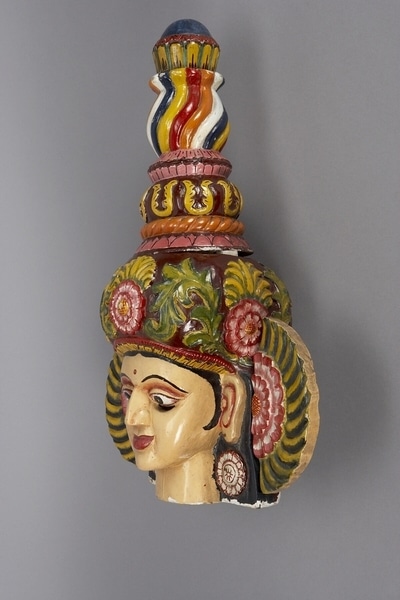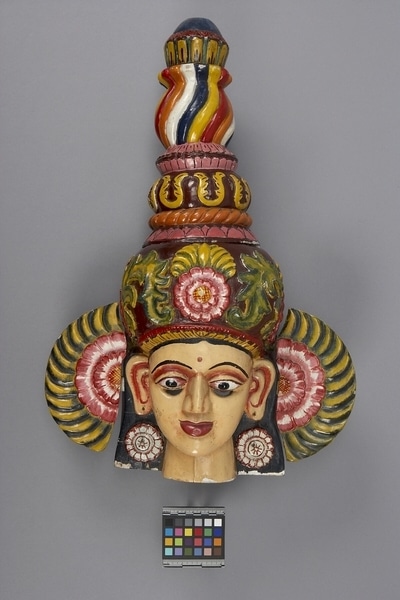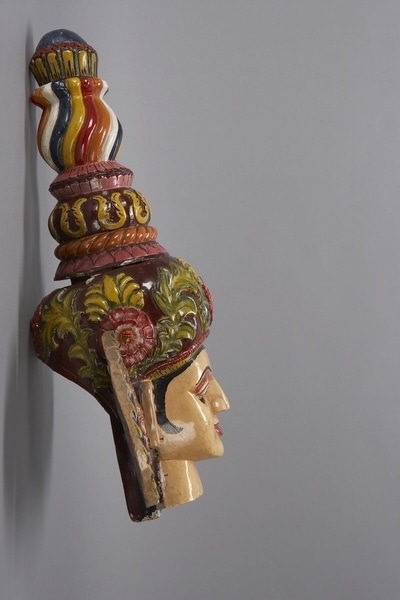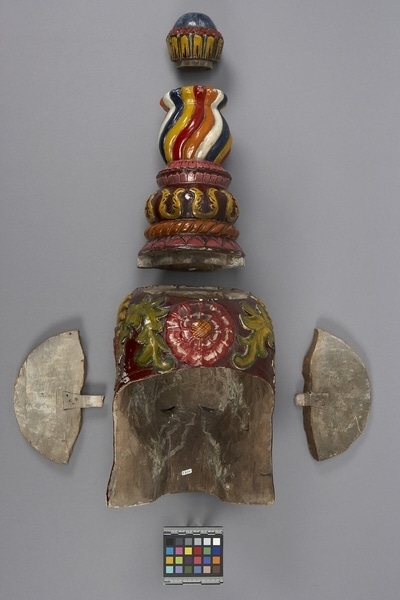Mask Item Number: Eh111 a-e from the MOA: University of British Columbia




Description
Mask with a humanoid face wearing a dark red headdress with a multicoloured floral motif (a) flanked by two roughly semicircular appendages with a floral design attached to the head by mortise and tenon joints (b and c), and surmounted by an elaborate tiered extension to the headdress (e) that ends in a domed cap (d). The face is naturalistic, with red closed lips, a narrow nose, a red tilaka mark on the forehead and black hair. There is a raised floral design below each ear. The tiers of the headdress are multi-coloured with geometric, rope-like and leaf designs as well as wavy stripes.
History Of Use
Kolam mask representing queen, possibly Bhahmadata Devi? Kolam is a rural drama formed in two or more parts. It originated in the desire of a mythical pregnant queen to watch a dance performance. The first part, or prelude, introduces the animal, supernatural, and human characters, including royalty. The king and queen, unlike the other characters, do not dance but may seat themselves on stage to watch the performance, or they may circle the stage and exit. The main part of the performance is a dramatic enactment of a well-known folk story.
Cultural Context
folk drama; fertility rite
Iconographic Meaning
Turreted headdress, floral designs, flesh toned face, closed lips are associated with aristocracy as is red tilaka mark on the forehead.
Item History
- Made in Ambalangoda, Sri Lanka ? before 1950
- Collected during 1983
- Owned by Ebert's Gallery
- Owned by Jason Schoonover before June 21, 1984
- Received from Museum of Anthropology Shop Volunteers (Funding source) and Jason Schoonover (Seller) on June 21, 1984
What
Who
- Culture
- Sinhalese
- Previous Owner
- Ebert's Gallery and Jason Schoonover
- Received from
- Museum of Anthropology Shop Volunteers (Funding source) and Jason Schoonover (Seller)
Where
- Holding Institution
- MOA: University of British Columbia
- Made in
- Ambalangoda, Sri Lanka ?
When
- Creation Date
- before 1950
- Collection Date
- during 1983
- Ownership Date
- before June 21, 1984
- Acquisition Date
- on June 21, 1984
Other
- Condition
- good
- Current Location
- Case 106
- Accession Number
- 0972/0001 a-e